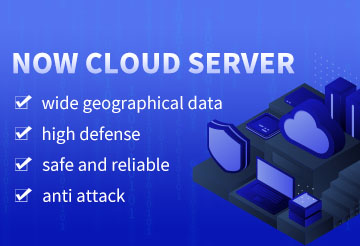The Difference Between a Server & Supercomputer
-
Release time:2013-10-11

Browse:26952
-
Other People Are Reading
 How to Set up a DNS Root Domain Record
How to Set up a DNS Root Domain Record 
You might never interact with a supercomputer, but you're communicating with a server as you read this article. While servers are common throughout computing life, supercomputers often reside in universities, science labs, government agencies and other institutions that can afford the major expense of purchasing them. The University of Texas, for example, uses its Stampede supercomputer to assist with scientific research. If you work with computers or the Internet, you may need a server to help you one day
Eranet Link

Please Choose the Size of Space: 300MB 500MB 1000MB 3000MB Buy Now
Why Choose Us
Our Advantages
- Sub-website support, bulk domain names binding with IDN and Chinese domain names supported.
- Enterprise Mail and Code-Tone are free to use,real-time auto transferring the pages between simplified Chinese and traditional Chinese.
- Powerful management system, statistics, protocol WAP supported.
- GCDN service for free, high-speed and stable host guaranteed.
- 24/7 technical support.
Supercomputer Capabilities
Movies sometimes portray supercomputers as advanced technological devices capable of saving the world or destroying it. In reality, supercomputers consist of regular hardware that people combine in mammoth proportions. Because supercomputers contain so many processors, they excel at modeling complex systems. Experts use them to predict the weather, build airplanes, model the brain and simulate the way the planet works. The Sequoia Blue Gene/Q supercomputer, for instance, set a performance record in 2013 by processing 504 billion events per second. That made it the second-most powerful supercomputer in the world at the time of publication. This type of processing power equals that of about 1 million desktop computers.Server Responsibilities
As its name implies, a server serves things. Those “things” consist of bits and bytes of data that enter and leave the server as it works. There are different types of servers: Web servers make the Internet possible by processing requests from surfers and sending them back data. Web browsers assemble that data to generate Web pages. Software determines what a particular server does. Your computer could become a useful file server if you installed the right software. People on your network could communicate with the server and ask it to send them files that they need.
Server Types
While an old computer can become a server, people often choose powerful machines to handle their server needs. Servers, such as those that process database transactions, must be fast enough to handle multiple requests. Organizations that handle critical operations often connect several servers so that they act as a unit. If one server fails, another one assumes its responsibilities. Like regular computers, servers come in a range of prices depending on their hardware and software configurations.Supercomputer Costs
The cost of a supercomputer can vary because the people who create one have the option to configure the computer the way they like. In a May 2013 article, CNN Money described a Cray XC30-AC supercomputer that costs half a million dollars. That's a fraction of what the Cray XC-30 cost at that time. That supercomputer's price tag ranged between $10 million to $30 million depending on the machine's configuration. One reason that these machines cost so much is that they use parallel processing to perform calculations simultaneously. That requires owners to purchase multiple CPUs and higher end hardware components.Server Costs and Setup Details
You can't put a price tag on a server because you don't even have to buy a machine to own one. However, if you're talking about a typical network server that manages large amounts of traffic, you're looking at prices higher than what you'd pay for a regular desktop computer. Prices may vary from a few hundred dollars to several thousand dollars. In addition to hardware costs, server owners may also incur software costs that vary depending on the type of server they're using. The price for a simple file or gaming server may be a lot lower than the price for a mission critical database server running SQL Server software. Prices rise as more processing power is added to servers.Other Server Considerations
Many IT personnel mount multiple servers on racks and place them in cool rooms. Cooler rooms help prevent those machines from getting too warm. If you're thinking about installing high-performance servers, factor in those types of secondary costs as well as the price you'll pay for server software. Software prices also vary depending on the type of server you wish to set up.Fun with Supercomputers
If you had the expertise, money and time, you could build your own supercomputer. These machines typically consist of multiple CPUs that reside in racks that may fill a room. You'll also need an adequate water supply because you need that to cool a supercomputer. These machines aren't just fast, but they also have massive memories that can reach into the petabyte range -- 1 petabyte can hold more than 58,000 movies. Finally, when building your supercomputer, don't forget the RAM; you'll need several thousand gigabytes just to get started.
Search


 China Yuan RMB
China Yuan RMB U.S. Dollar
U.S. Dollar Euro
Euro British Pound
British Pound Canadian Dollars
Canadian Dollars Australian Dollars
Australian Dollars Hong Kong Dollars
Hong Kong Dollars Vietnamese Dong
Vietnamese Dong More Info
More Info 







